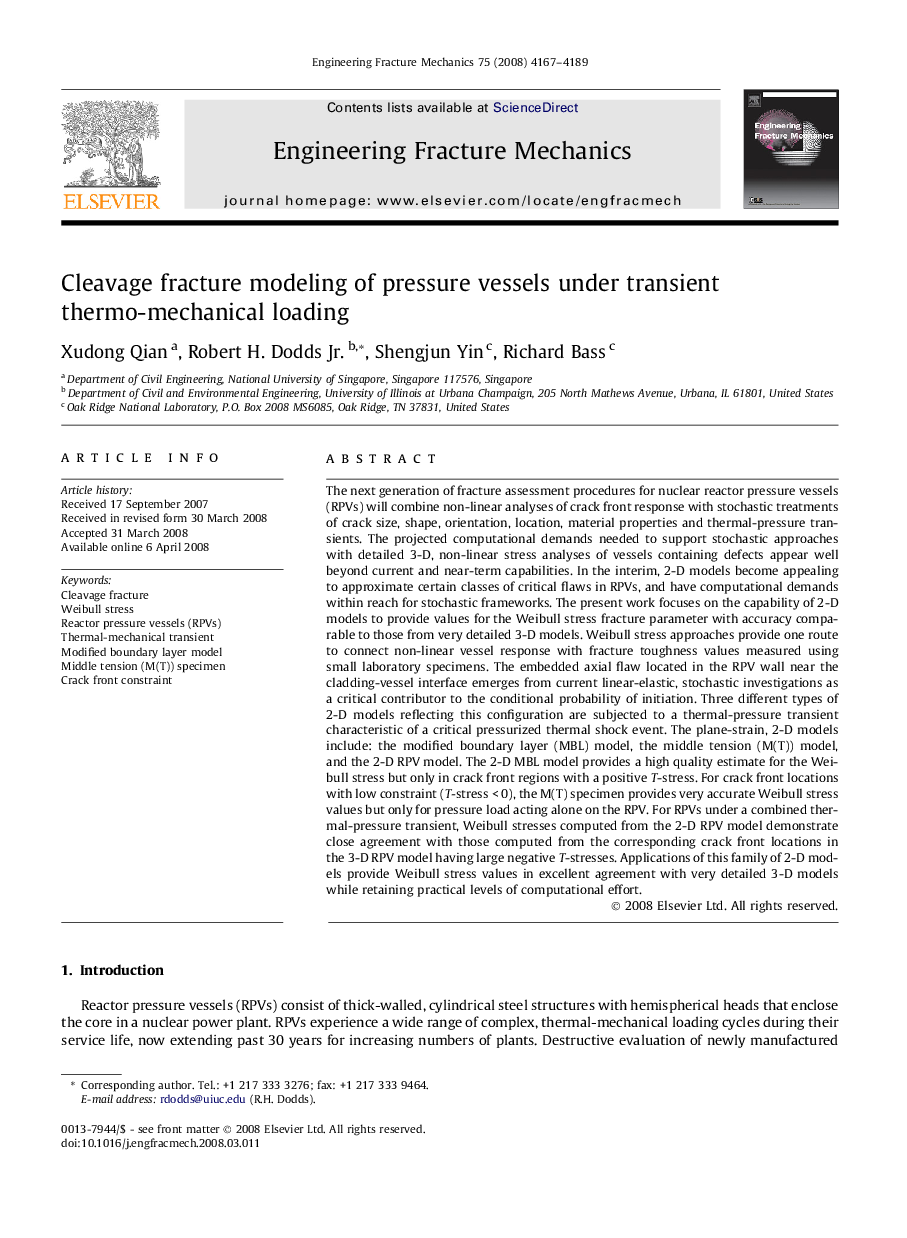| کد مقاله | کد نشریه | سال انتشار | مقاله انگلیسی | نسخه تمام متن |
|---|---|---|---|---|
| 771626 | 897649 | 2008 | 23 صفحه PDF | دانلود رایگان |

The next generation of fracture assessment procedures for nuclear reactor pressure vessels (RPVs) will combine non-linear analyses of crack front response with stochastic treatments of crack size, shape, orientation, location, material properties and thermal-pressure transients. The projected computational demands needed to support stochastic approaches with detailed 3-D, non-linear stress analyses of vessels containing defects appear well beyond current and near-term capabilities. In the interim, 2-D models become appealing to approximate certain classes of critical flaws in RPVs, and have computational demands within reach for stochastic frameworks. The present work focuses on the capability of 2-D models to provide values for the Weibull stress fracture parameter with accuracy comparable to those from very detailed 3-D models. Weibull stress approaches provide one route to connect non-linear vessel response with fracture toughness values measured using small laboratory specimens. The embedded axial flaw located in the RPV wall near the cladding-vessel interface emerges from current linear-elastic, stochastic investigations as a critical contributor to the conditional probability of initiation. Three different types of 2-D models reflecting this configuration are subjected to a thermal-pressure transient characteristic of a critical pressurized thermal shock event. The plane-strain, 2-D models include: the modified boundary layer (MBL) model, the middle tension (M(T)) model, and the 2-D RPV model. The 2-D MBL model provides a high quality estimate for the Weibull stress but only in crack front regions with a positive T-stress. For crack front locations with low constraint (T-stress < 0), the M(T) specimen provides very accurate Weibull stress values but only for pressure load acting alone on the RPV. For RPVs under a combined thermal-pressure transient, Weibull stresses computed from the 2-D RPV model demonstrate close agreement with those computed from the corresponding crack front locations in the 3-D RPV model having large negative T-stresses. Applications of this family of 2-D models provide Weibull stress values in excellent agreement with very detailed 3-D models while retaining practical levels of computational effort.
Journal: Engineering Fracture Mechanics - Volume 75, Issue 14, September 2008, Pages 4167–4189